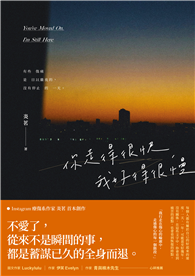佛教是一個富有科學實證精神與批判精神的理性宗教,因為佛教正法所宣說的解脫智慧與實相智慧,完全符合有情生命與器世間所涉及現象界與實相界的事實真相,因此佛教實證與批判的內涵是函蓋一切世間法與出世間法。所以佛教經典中經常可見釋迦牟尼佛勸說眾生「宜捨此惡邪見」、「不邪見」,乃至為救護眾生而勸告佛弟子「勤破邪見」、「勝智摧邪智」;也就是以實證第八識如來藏心的解脫智慧與實相智慧,批判摧滅偏邪而不符法界實相的錯誤見解,以期利他與自利。這是大乘佛教獨有的殊勝智慧,不但不共於二乘聖者,也不共於一切外道、宗教或純粹的學術研究。
在大乘佛教的不同宗派中,都可以看到以同樣的實證精神與批判精神作為核心價值。例如唯識宗的玄奘大師在《成唯識論》中主張「若不摧邪難以顯正」,或如中國禪宗許多證悟祖師「拈提古今」,都是具體的案例。玄奘大師與禪宗祖師們之所以能夠摧邪顯正、拈提古今,就是因為實證第八識如來藏心,甚至因此發起唯識種智智慧。特別是禪宗所強調明心與見性的實證,正是佛教之賢聖能夠以「勝智摧邪智」的智慧根源。
然而,也有假冒佛教的外道宗派,錯以為辨正佛教義理的能力,係來自於學術式的、思辯式的、固定問答式的「辯經訓練」,並以此自豪。例如,西藏流亡到印度的達賴偽政府所弘傳本質只是雙身法與鬼神信仰的「藏傳佛教」,卻將佛教的批判精神與批判能力,錯誤地歸屬於「辯經訓練」。其實,佛法中以「勝智摧邪智」的智慧與能力,並不是透過類似達賴喇嘛所設立達蘭薩拉辯經學院的「辯經訓練」而來;而是以科學實證的精神與方法驗證蘊處界的虛妄不實,以及蘊處界之上別有第八識如來藏心真實存在;因此實證解脫智慧與實相智慧而發起擇法眼,與學術訓練、思辯訓練或問答訓練毫無關係。
繼承自應成派中觀的六識論思想而作的辯經訓練,無論如何訓練思辯、研究與問答,終不離六識虛妄的言語境界,終不離夜夜自我斷滅的虛妄境界,如何可能解脫生死流轉?不能解脫生死,又有何殊勝之處而能勝他呢?因此依於辯經訓練之「藏傳佛教」,於雙身法之邪淫或六識之斷滅等本質,終不能自辯而無法使之轉變為清淨、常住。如此依於虛妄六識所建立的辯經訓練,何有批判及自省之能力可言?如此依於人類有情皆能實證的六識論,與外道凡夫並無不同,而沒有任何殊勝的智慧可言。如此同於外道凡夫的辯經訓練,顯然沒有不共於外道凡夫的解脫智慧與實相智慧,因此可知達賴喇嘛建立達蘭薩拉辯經學院所弘揚的「藏傳佛教」,根本不屬於佛教的任何宗派,其實只是貪著世間淫慾而迷信鬼神的喇嘛教。
由於大乘佛教從天竺流傳至東土,並在震旦從唐宋二代以降,以生動活潑的禪宗面貌,開展出興盛的大乘文化。而禪宗不但標舉明心見性的實證目標,並且展現「拈提古今」的批判精神,因此禪宗文化頗能代表大乘佛教實證與批判的核心精神。然而批判精神卻不能離開佛教實證的前提而存在,若離佛教實證的前提,則是落入純學術想像之中。如同日本「批判佛教」松本史朗之類,就是犯下這個過失,使他們對正統佛教的批判淪落到荒謬絕倫的地步。由此之故,本期學報以「中國禪宗、批判佛教」作為主題,並且採用三篇相關的論文如下:
1、中國禪宗探源—並略論三乘聖者同聞大乘經典(蔡禮政)
2、以實證佛學探究中國禪宗的禪法傳承本質—以蕭平實老師的義學主張為範式(張志成)
3、「批判佛教」思潮之「基體」論謬誤剖析(袁經文)
Briefing
Buddhism is a rational religion full of scientific, positivist, and critical spirits. The liberation wisdom and the wisdom of ultimate reality expounded in the true Buddhism are in complete accord with the true facts of the phenomenal world and the ultimate reality, both of which are involved with the life of sentient beings and the material worlds. Hence, the positivist and critical contents of Buddhism include all mundane and transmundane dharmas. In Buddhist sutras, it is often found that Buddha Sakyamuni advised sentient beings “to renounce these evil erroneous views” and “to have no erroneous views” to save sentient beings, the Buddha even advised the Buddhist disciples “to diligently refute the evil views” and “to use the supreme wisdom to destroy the evil wisdom.” Namely, with the liberation wisdom and the wisdom of ultimate reality attained from the actual realization of the eighth vijnana Tathagatagarbha, one criticizes and destroys the erroneous views that are incompatible with the ultimate reality of dharma-realm to benefit oneself and others. This is the exceptional wisdom unique to Mahayana Buddhism, but not commonly shared by the saints of Two Vehicles, non-Buddhists, and religious or pure academic researchers.
In different schools of Mahayana Buddhism, we can see the core value based on the same positivist and critical spirits. For example, in the Treatise on the Establishment of Vijnana-Only, Master Xuanzang of the Vijnana-Only School claimed, “It will be difficult to manifest the right dharma if one does not destroy the evil one,” or in the Chinese Chan School, many enlightened patriarchs “comment on ancient and modern masters”; both are typical examples. The reason why Master Xuanzang could destroy the evil dharma and manifest the right one, or the Chan patriarchs could comment on the ancient and the modern, is that they had personally realized the eighth vijnana Tathagatagarbha and even had attained the way-seed-prajna of Vijnana-Only. In particular, the actual realization of the true mind and seeing the Buddha-nature emphasized in the Chan School is exactly the origin of wisdom, by which the Buddhist sages and saints can “use the supreme wisdom to destroy the evil wisdom.”
However, there are also non-Buddhist schools under the guise of Buddhism falsely believing that the capability of Buddhist doctrine debate comes from “the training in scripture debate,” which is academic, dialectical, and catechetic; they are also proud of it. For instance, exiled from Tibet to India, the Dalai’s bogus government propagates “Tibetan Buddhism,” whose essence is merely the couple practice of copulation, with a belief in ghosts and deities. They mistakenly believe that the critical spirit and capability of Buddhism come from the “training in scripture debate.” In fact, the capability to “use the supreme wisdom to destroy the evil wisdom” does not come from the “training in scripture debate” similar to that in the Institute of Buddhist Dialectics founded by the Dalai Lama in Dharamsala. With the scientific, positivist spirits and methods, the Buddhist wisdom actually comes from the verification that the aggregates, sense-fields, and sense-realms are illusory unreality, and that there is the eighth vijnana Tathagatagarbha really existing beyond the aggregates, sense-fields, and sense-realms. Therefore, to actually realize the liberation wisdom and the wisdom of ultimate reality to bring about the eye for discriminating the right doctrines has nothing to do with the academic, dialectical, or catechetic trainings.
The training in scripture debate, which inherits the theory of six vijnanas from Prasangika Madhyamika, is connected with the illusory language state of six vijnanas, which cease to exist every night; how could it be possible to be liberated from the cycle of births and deaths? Unable to be liberated from births and deaths, how could one be exceptional and superior to others? Hence, based on the training in scripture debate, the practitioners of “Tibetan Buddhism” cannot defend their viewpoints about the sexual misconduct of the copulation tantra or the nihilistic essence of six vijnanas, which cannot be transformed into a state of purity or permanent existence. How could the training in scripture debate based on the illusory six vijnanas enable one to be critical and introspective? In this way, based on the theory of six vijnanas, which can be actually realized by all human beings, the practitioners of “Tibetan Buddhism” are the same as non-Buddhists and ordinary mortals, devoid of any exceptional wisdom. Obviously, such training in scripture debate, similar to non-Buddhists and ordinary mortals, cannot bring about the liberation wisdom or the wisdom of ultimate reality, which are not commonly shared by non-Buddhists or ordinary mortals. Therefore, the “Tibetan Buddhism” propagated by the Dalai Lama in the Institute of Buddhist Dialectics in Dharamsala does not belong to any Buddhist school, but in fact the Lamaism, which craves the mundane lust with a blind belief in ghosts and deities.
Mahayana Buddhism spread eastwards from India. In China, manifested as the lively Chan School, the Mahayana culture had been flourishing after the Tang and Song dynasties. The Chan School not only sets goals to actually realize the true mind and see the Buddha-nature but also shows the critical spirit of “commenting on ancient and modern masters.” Therefore, the Chan culture represents the core spirits of actual enlightenment and criticism in Mahayana Buddhism. However, the critical spirit cannot exist without the premise of Buddhist actual enlightenment; otherwise, it would fall into the trap of purely academic imagination. Just like Shiro Matsumoto of “Critical Buddhism” in Japan, people made this error, and their critique of the orthodox Buddhism is completely absurd. For this reason, the topics of this issue are about “the Chinese Chan School and Critical Buddhism,” and three related articles are presented as follows:
1.Exploring the Origin of the Chinese Chan School─Also a Brief Comment on the Saints of Three Vehicles Hearing Mahayana Teachings Together (Tsai Lichen)
2.To Explore the Essence of Chan Transmission in the Chinese Chan School with Positivist Buddhism─Using the Practical Theory of Venerable Pings Xiao as a Model (Chang Chihcheng)
3.Analyzing the Errors in the “Dh?tu-v?da” of the “Critical Buddhism” (Yuan Jingwen)
本書特色
中國禪宗探源
—並略論三乘聖者同聞大乘經典
摘要
中國禪宗一向被學術界認知為佛教在中國地區獨特的文化發展,而與印度禪有所不同;在日本一小分學術界人士別有用心之情況下,開始了對中國禪宗的批判,想要把中國禪宗外道化而逐出佛教之外;果能成功,將會使中國佛教失去原本獨特於全球佛教之上的勝妙。本文從中國禪宗所特有的禪宗公案為標記,探源於阿含部經典並發現阿含部經典中有許多禪宗公案。本文認為只有採用《蜜丸喻經》實證性批判的方法,才能夠正確判讀禪宗公案與佛教經論的意義。因此從實證性批判方法證明,龍樹菩薩樹立大乘佛教時期,不應該稱為「初期大乘」,而應該稱為「大乘復興」,即大乘佛教的第一次復興,才是符合歷史事實的定位。所以實證性批判方法的適用性,優先於文獻學與詮釋學的所有方法。
本文研究認為鴦掘魔羅「追佛公案」,被部分學術人士視為佛教故事而非公案,是因為此類學術人士不知禪宗一向遵守佛教隱覆說義的傳統,也因為二乘聖者不知禪宗的所悟內容,故不能了知這其實是禪宗的公案。根據鴦掘魔羅公案的研究,本文發現禪宗公案之目的都是為探求法界實相─第八識如來藏─而發起的法戰;而實證禪宗公案所獲得大乘見道的智慧,可以滅除六見處的錯誤與過失。禪宗公案是滅除六見處之法,也是為了矯正沒有實證法界實相而墮於想像猜測的斷常二見者以及二乘人。因此滅六見處是大乘見道所證,而不是二乘人所實證的內涵,也顯示大乘真實禪與二乘方便禪思的不同。
本文舉出阿含部經典中三則公案,以及一則野狐禪,證明大乘禪曾在佛世普遍宣說的歷史事實。本文以阿含部經典中另一則禪宗公案證明,佛陀親自宣說第二轉法輪「般若時」的大乘經典時,二乘人不但參與法會並且親見大乘菩薩見道公案的發生,最後結集記錄於阿含部經典中。由於阿含部經典中有大量關於大乘法義的文獻證據,因此證明大乘經典是佛陀親口宣說,並由三乘人共同見證「大乘是佛說」的歷史事實。
關鍵字:禪宗史、禪宗公案、大乘復興、初期大乘、文本批判、實證性批判、大乘禪、小乘禪、真實禪、方便禪思、六見處
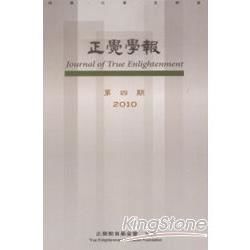

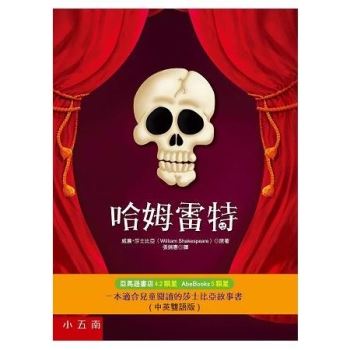
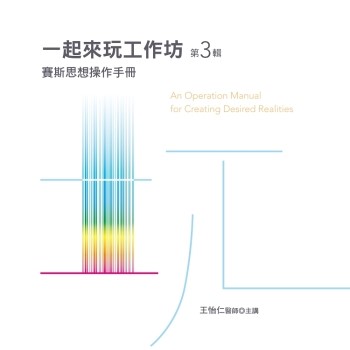
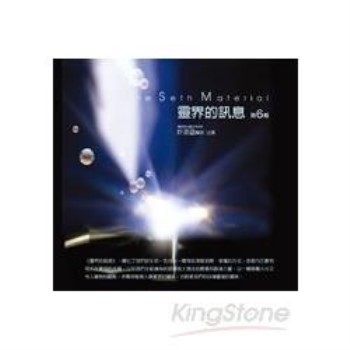
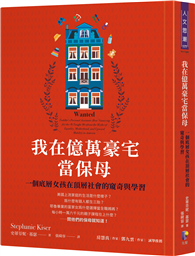



 2025【精選作文範例】國文(作文)[快速上手+歷年試題](記帳士)](https://media.taaze.tw/showLargeImage.html?sc=14100120565)
